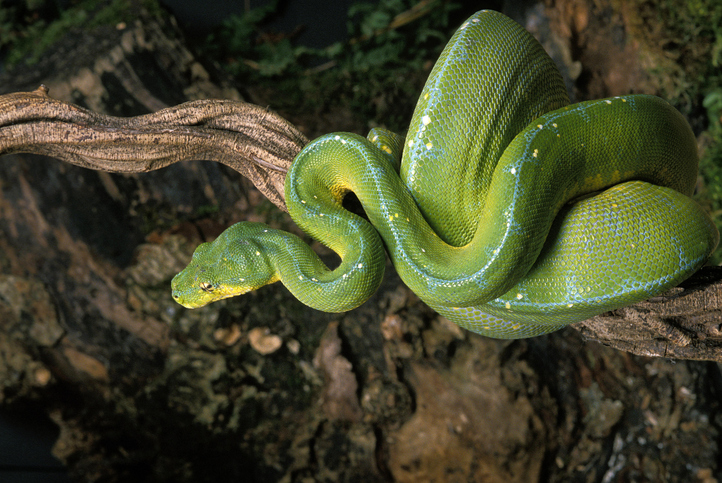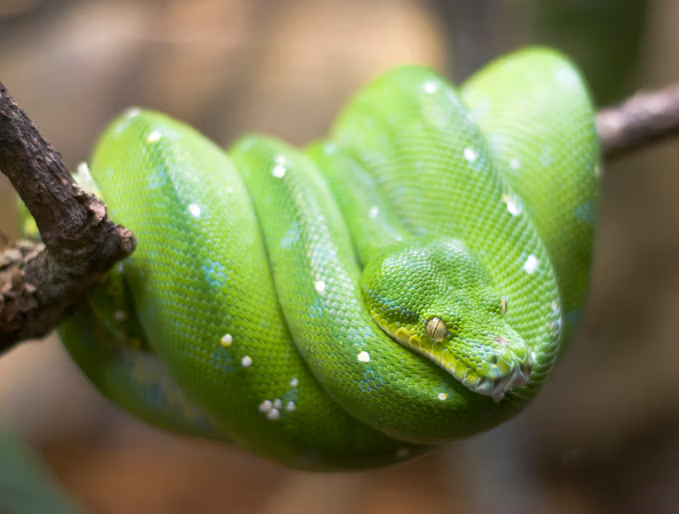Green Tree Pythons are found in New Guinea, eastern Indonesia, and the northeast Cape York Peninsula of Australia.
They prefer tropical rainforests with thick vegetation and high humidity. They may also inhabit secondary forests and gardens. Most of their time is spent in trees, but they also come down onto the ground, especially at night.
The green tree python’s lifespan in the wild is believed to be an average of 15 years. However, they can live up to 20 years in human care.
Green tree pythons eat mostly small mammals and reptiles. As juveniles, they are diurnal (or active during the day) and hunt smaller animals. As adults, they are nocturnal and hunt larger prey that is more active at night.

These pythons locate prey by sight and use labial pits to identify an animal’s heat signature. They may also wiggle their tail like a lure. When curious prey gets close enough, they strike.
These snakes generally reach sexual maturity at about 2 years old. Both males and females mate with several different partners in their lifetime. They do not have a specific breeding season and may mate at any time of the year.
Females do not eat during gestation, which lasts 70-90 days, and spend time looking for a suitable nest site. They prefer holes in hollow trees but will nest in any protected area with enough humidity. Females can produce a clutch of 5-35 eggs. They regulate the incubation temperature by wrapping around their eggs and using “muscular shivers” to produce heat. The optimal incubation temperature is 85 degrees Fahrenheit (29.5 degrees Celsius). Females protect and incubate their eggs for 45-56 days until they hatch.


